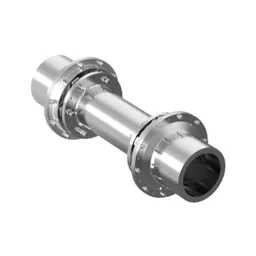Power transmission couplings are designed to transfer power from one shaft to another in rotating equipment. They can accommodate misalignment, reduce transmission of shock loads and provide a disconnection point for maintenance or alteration of the machinery.
Here are some of the primary purposes of power transmission couplings:
- Transmitting Power: Connect two shafts to transfer power from one to another efficiently.
- Accommodating Misalignment: Tolerate misalignments between shafts without causing stress or damage.
- Facilitate Maintenance: Serve as a disconnect point for easier disassembly and maintenance of machines.
- Safety and Overload Protection: Designed to act as a safety device, failing in a controlled manner under overload conditions to protect other machinery components.
- No Slip Power Transmission: Provide a direct link for accurate, slip-free power transfer.
- Reducing Wear and Tear: Significantly decrease wear and tear on bearings and other machinery components by compensating for misalignments with reduced loading.
- Reduced Maintenance and Downtime: In the case of non-lubricated couplings (disc, diaphragm, elastomeric or rigid), there is no need for regular maintenance checks and lubrication, as a result, increasing your plant's uptime and profitability.
- Conserving the Environment: Disc and diaphragm couplings are designed for infinite life, therefore minimizing your carbon footprint and costs.
When it comes to power transmission coupling types, the decision to use one over another depends on factors like the amount of torque to be transmitted, the equipment speed, the type of machines being connected, the equipment bearing arrangement, the space envelope available, the degree of misalignment present and the operational environment. Among the power transmission coupling types, whether rigid, elastomeric, disc or diaphragm, each has specific design features that make it suitable for a particular application and operating condition.
Power transmission couplings are ubiquitous across myriad industries, each with unique power transfer and motion control requirements, including oil and gas, mining, pulp and paper, power generation, marine propulsion, chemical, water and wastewater. Compliance with standards like API 610 and API 671 is crucial, enhancing reliability, safety, and performance and ensuring regulatory adherence. This is especially significant in industries like oil and gas, characterized by challenging operating conditions and where the ramifications of equipment failure are notably severe.
















